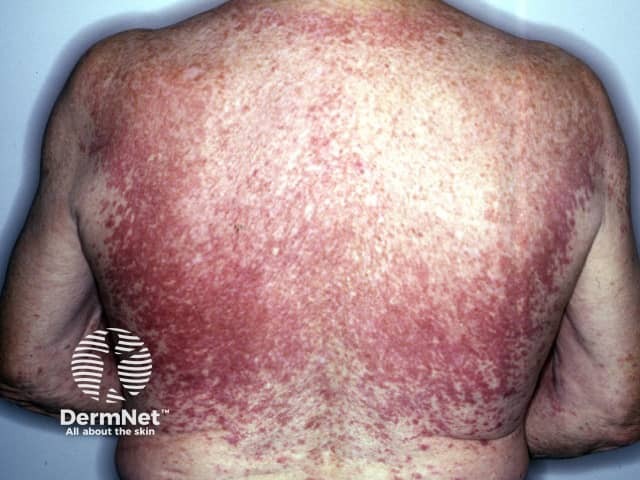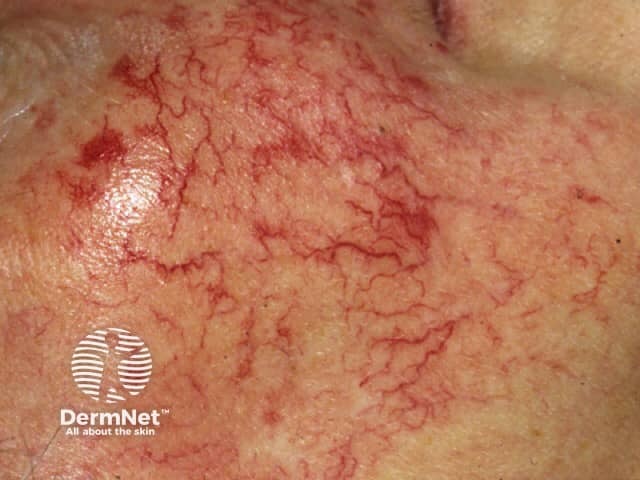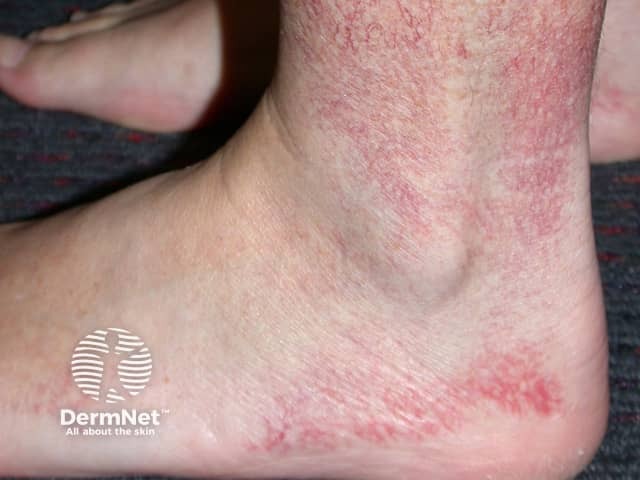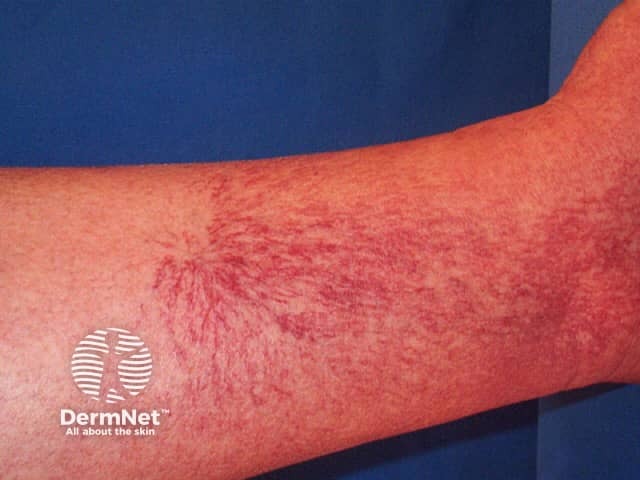Main menu
Common skin conditions

NEWS
Join DermNet PRO
Read more
Quick links
Author: Vanessa Ngan, Staff Writer, 2003.
Introduction Causes Demographics Signs and symptoms Differential diagnoses Treatment
Telangiectasia is the term used to describe the permanent dilation of small blood vessels, creating small, red markings on the skin and mucous membranes.
Essential or primary telangiectasia refers to capillary dilation of unknown origin. No preceding or coexisting skin or internal disease is present. Generalised essential telangiectasia is just one type of primary telangiectasia and is given this name because of its widespread distribution pattern over the body.

Essential telangiectasia

Essential telangiectasia

Essential telangiectasia

Essential telangiectasia
The cause of generalised essential telangiectasia remains unclear. Sometimes there may be a family history, which suggests a genetic component.
Generalised essential telangiectasia usually first appears around 40–50 years of age and affects women more often than men.
Generalised essential telangiectasia is characterised by the following features:
Telangiectases may be slow or fast to develop. They usually gradually spread to other parts of the body. They persist indefinitely and do not spontaneously resolve.
Apart from the emotional distress that may be caused by the telangiectases, generalised essential telangiectasia is a benign condition that is not associated with any physical complications.
Other types of telangiectasia described on DermNet include:
It is very difficult to remove the telangiectases of generalised essential telangiectasia. Patients who are self-conscious may use cover-up cosmetics or self-tanning lotions to hide the telangiectases.
They are usually unresponsive to sclerotherapy. Recently, various vascular lasers (frequency-doubled Nd-YAG, copper bromide and pulsed-dye lasers) have shown promise in the treatment of generalised essential telangiectasia.